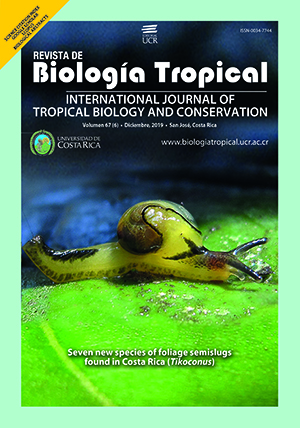Resumen
Introducción: El guayacán real (Guaiacum sanctum; Zygophyllaceae) de Mesoamérica y las Antillas está amenazado en gran parte de su área de distribución. Evaluamos si una población de G. sanctum en el Parque Nacional Palo Verde en Costa Rica es viable a largo plazo. Métodos. Usando dos estudios demográficos, uno en 1997 y otro en 2017, estimamos las tasas de supervivencia y fecundidad para cada clase de edad, la tasa de crecimiento poblacional (lambda), y las elasticidades para cada tasa vital, y usamos un modelo determinístico denso-independiente para proyectar la trayectoria a largo plazo de la población. Resultados: las tasas vitales estimadas durante los últimos 20 años sugieren que esta población está disminuyendo rápidamente, con un lambda estimado de 0.62. Aunque algunas clases de edad aumentaron en abundancias, los renovales son raros y los individuos reclutados en 1997 aún no alcanzaron la madurez reproductiva. Nuestros resultados sugieren que la abundancia actual de G. sanctum dentro del Parque Nacional podría no ser un buen indicador del estado de conservación a largo plazo, y por nuestro análisis de viabilidad poblacional, estimamos que la población estudiada disminuiría a menos del 1 % de su actual abundancia en los próximos 200 años. Conclusiones: el deterioro ecosistémico a escala de paisaje afectando a la región del Parque Nacional Palo Verde, como la pérdida de dispersores de semillas y la supresión de disturbios, podría compensar la protección pasiva de G. sanctum dentro de los límites del Parque Nacional. Confiar en la estricta protección dada por la locación de la población dentro del parque podría no ser suficiente para conservar esta población de G. sanctum. Recomendamos incorporar, dentro de un programa de investigación, una protección experimental más proactiva y/o medidas de restauración, posiblemente incluyendo tratamientos de disturbios.
##plugins.facebook.comentarios##

Esta obra está bajo una licencia internacional Creative Commons Atribución 4.0.
Derechos de autor 2019 Ulises Balza, Roland Charles de Gouvenain






